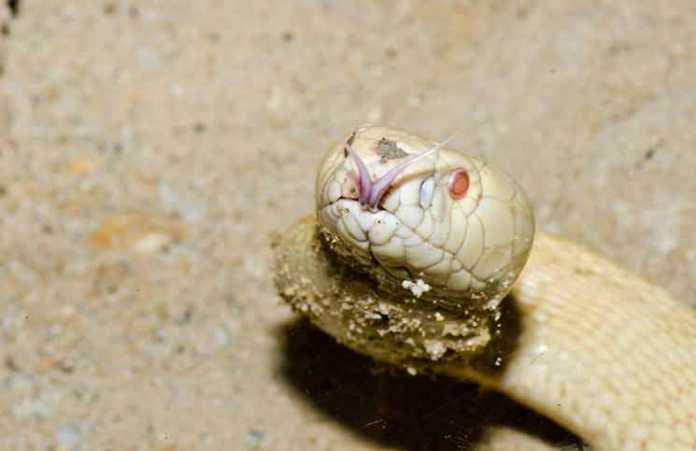This is intended to be the ‘Prevention’ part of any First Aid For Snake Bite Guide. The author takes no responsibility for the accuracy of this information!
- Obviously the best prevention is to avoid getting bitten. This will save you the hassle of even using the full guide of First Aid for Snake Bite. This is facilitated by the fact that humans are not the natural prey of any Venomous snake. We are a bit large for them to swallow whole and they have no means of chopping us up into bite size pieces.
- Nearly all snake bites in humans are the result of a snake defending itself when it feels threatened. In general snakes are shy and will simply leave if you give them a chance. The basic rule is to be sure the snake knows you are coming. Walk heavily, they probably sense ground vibrations better than sound. If they sense your presence they will almost always leave before you even know they are there. (This may not apply in other parts of the world. Some of the more potent snakes may protect their territory as well as their bodies.)
- If you do unexpectedly confront a snake, stay calm, back away and do nothing to threaten it. (This assumes of course that the surprise didn’t cause you to jump well beyond the snake’s reach. It’s amazing what the human body can do in such circumstances.)
- Don’t run around barefoot in snake country, especially after dark. During warm weather snakes will be most active at night and will defend themselves if stepped on or if you walk too close and they sense danger. MFM lists going barefoot and gathering firewood after dark as two of the more common activities leading to snake bite. Going barefoot not only exposes you but also makes your footsteps quieter so you are less likely to be felt. You could invest in a pair of “snakeproof” boots but any high top leather boot is probably adequate. Long pants will also help since the snake has difficulty distinguishing between clothing and you. Venom injected into a fold of your clothing won’t hurt you much.
-

Get your Snake Bite Kit on Amazon! Remember that snakes like to hide under rocks, logs, brush etc. to protect themselves from sun or cold. Be *very* careful in snake country about moving such objects or reaching into anywhere a snake might hide, or even walking by them. They might well perceive your actions as aggressive and defend themselves. This is probably the most dangerous situation since there may be more than one snake in the same place and, taken by surprise, they will strike without warning. Furthermore they will be more likely to bite your unprotected hand, not a leg or foot protected by clothing.
- Rock climbers should be careful in snake country. Snakes like to sun themselves on ledges and it can be a real eye-opener to poke your head up and stare one in the eyes. And while you won’t find them in the middle of a 5.12 face you may find them in cracks near ledges etc. Remember, the mice and rats which inhabit many cliff areas mean food to a snake and so attract them.
- It is also a good idea to protect yourself while sleeping. Snakes won’t come looking to bite you, but when the temperature starts to drop they often do look for a warm place to spend the night. That sleeping bag with you inside can be very attractive. Use insect netting or something else to keep them out (unless you relish the thought of waking up to find a snake in bed with you). There is a bit of controversy about if they will actually crawl into bed with you, but I would want to take precautions. Also check the sleeping bag before you get in to be sure it isn’t already occupied. The same goes for your boots in the morning.
- Be careful entering old buildings such as mining cabins. They make nice homes for snakes.
- Obviously you should not handle or tease poisonous snakes. Less obvious is the danger of handling them when they are dead. A reflex strike from a dead snake can be just as dangerous as a snake bite by a live one. This also applies to detached heads of dead snakes.
- And lastly, when your planning to be around snakes for a while – always have a Snake Bite First Aid Kit close by. Here’s one good one:
Coghlan’S Snake Bite Kit
For more fast facts about Cobras click here.
For further discussion on snakes, scientific classifications, venom research and much more, check the resources available in “The New Encyclopedia of Snakes”, available on Amazon.com.
 |
Click here to take a glimpse at
|
If you feel like a having a real Book on Snake Bites, then get this book: ‘Snakes and Snakebite‘ by Visser, J. & Chapman D.S.
And if you love African Hot snakes, this is THE Book for you: ‘Dangerous Snakes of Africa’ by Spawls, S. and Branch, B.



